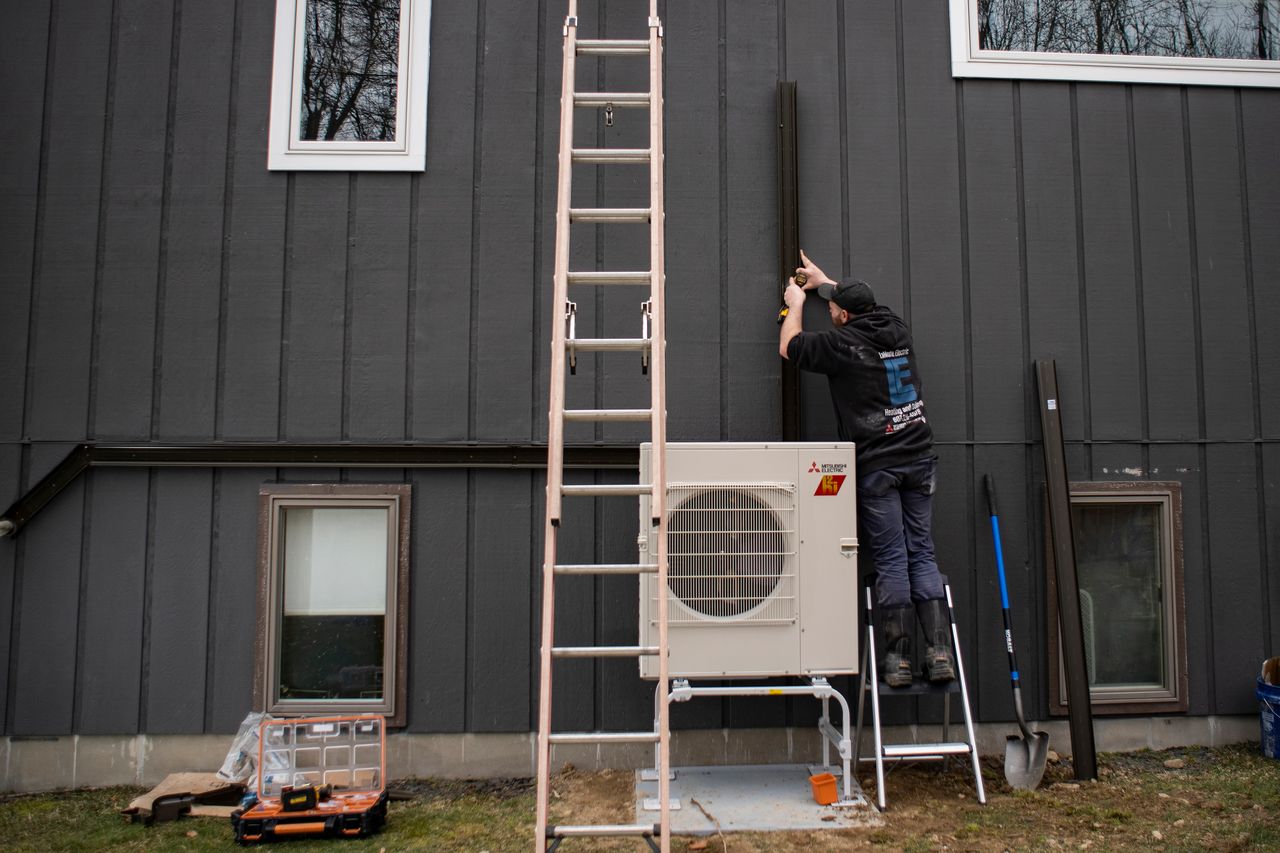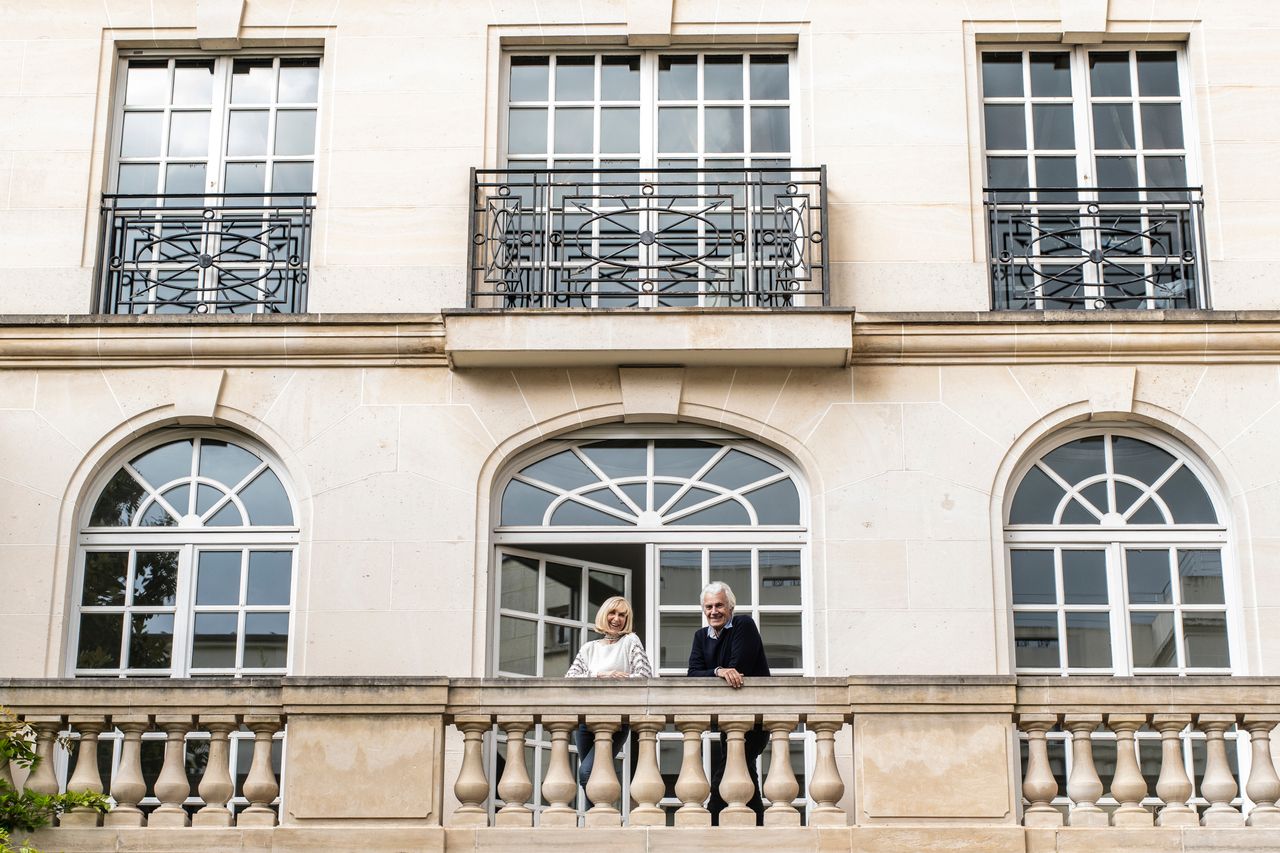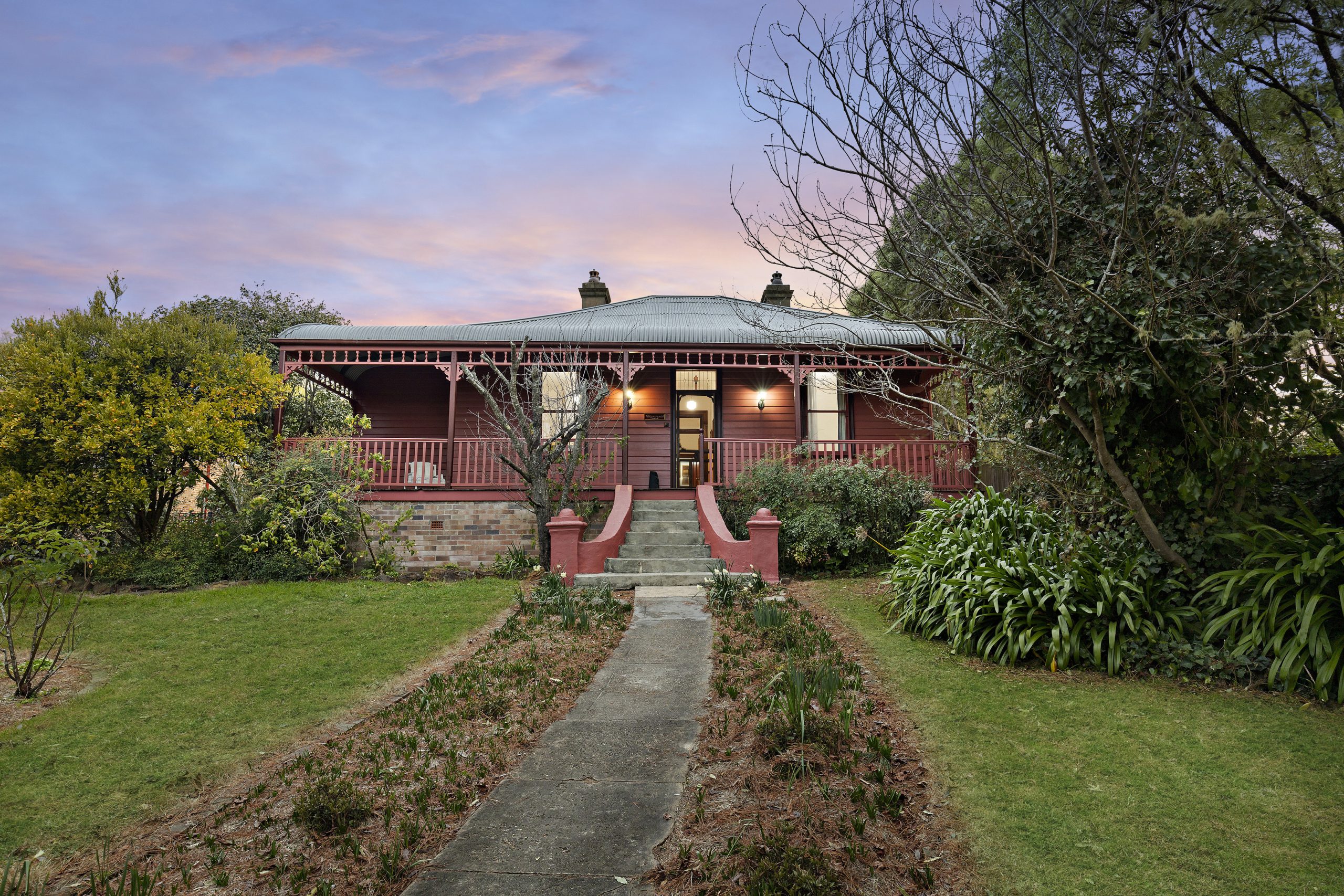America Is Trying to Electrify. There Aren’t Enough Electricians.
Climate law is expected to add new demand for car chargers and heat pumps
Electricians, the essential workers in the transition to renewable energy, are in increasingly short supply. They are needed to install the electric-car chargers, heat pumps and other gear deemed essential to address climate change.
Electricians say they are booked several months out and struggling to find enough workers to keep up with demand. Many are raising wages and prices and worried that they won’t be able to keep up as government climate incentives kick in.
“I’m tired of telling people I can’t help them,” said Brian LaMorte, co-owner of LaMorte Electric Heating and Cooling in Ithaca, N.Y., which does residential heat-pump installations and electric-service upgrades. His six-person company is booked roughly six months out, so he has been referring potential new customers to other firms in the area.
The 48-year-old brought on two apprentices last year and has seen the price of an average job rise to roughly $20,000 from about $16,000 two years ago due to rising raw materials, equipment and labor prices.
Dan Conant says he worries about getting enough electricians for his West Virginia renewable-energy company Solar Holler. The company started an internship program in partnership with a local high school and expects the state will need several thousand more electricians over the next decade.
“Ultimately, this is the bottleneck,” Mr. Conant said.
The scarcity is part of a nationwide labour shortage and most acute in the Northeast and California, where demand for green-energy products is highest, in part due to state incentives. Some economists expect the pinch to spread across the country as incentives from the new federal law known as the Inflation Reduction Act kick in.
The current total of more than 700,000 electricians in the U.S. is expected to grow about 7% over the next decade, slightly faster than the nationwide average of 5%, according to the Bureau of Labor Statistics. The shift to renewable energy and the need to update electrical systems is expected to drive that growth. Some analysts say that expansion needs to be several times faster for the U.S. to meet its climate and electrification goals.
The BLS includes a separate category of solar photovoltaic installers, some of whom could also be electricians. Growth in that much smaller sector is expected to be above 25%.
Industry analysts say it will be difficult to meet that demand, particularly because more electricians retire every year than are replaced, and many retired during the coronavirus pandemic.
The median age of electricians is over 40 years old, in line with the broader workforce. But nearly 30% of union electricians are between ages 50 and 70 and close to retirement, up from 22% in 2005, according to the National Electrical Contractors Association.
The average annual electrician salary rose from roughly $50,000 to about $60,000 from 2018 to 2022, an increase roughly in line with the national average, according to the BLS.
The climate law will put several hundred billion dollars’ worth of incentives into the economy designed to accelerate the energy transition and boost clean-energy supply chains in the U.S. The law followed an infrastructure spending package and incentives for domestic semiconductor manufacturing that are also expected to spur demand for labour and could end up pushing up total construction costs.
“We’re definitely in a new era of industrial policy,” said Philip Jordan, vice president at BW Research, a firm that studies how policies will impact the economy and workforce. “We’re putting our finger on the scale in a much more aggressive way than we ever have before.”
The impact of these policies differs from that of broad-based stimulus passed under the Trump and then Biden administrations in 2020 and 2021. Those packages raised demand across the board for goods and services. These latest policies are much smaller in total dollars, but also more focused, with their effects falling acutely on certain types of workers and products and in certain regions.
“There’s not enough people to do all this,” said Georgia Republican Gov. Brian Kemp, who argues the programs should have been spread out over a longer period. His state has attracted billions of dollars in investments from companies such as Norwegian firm Freyr Battery and Koch Industries Inc. since the climate law’s passage.
To help address worker shortages, the law ties tax credits for renewable projects to the number of hours worked by apprentices.
Product makers such as Schneider Electric SE are working to make simpler products and drive down installation times. The company has been investing tens of millions of dollars in expanding its product manufacturing in North America and partnering with trade associations on training programs for electricians who install them, said Michael Lotfy, senior vice president of power products.
“We’re really trying to cope with the spike in demand that will happen,” he said.
On a recent week in Ithaca, three of Mr. LaMorte’s employees were installing a heat pump for Matthew Minnig, a 40-year old engineer who lives with his wife in a four-bedroom house. Mr. Minnig hopes to use the heat pump—which moves air between the inside and outside of a home—to replace a natural-gas boiler for heat in the winter and add air conditioning in the summer.
He ordered the units in April, but was told installation would take several months. “There are times I can remember last summer thinking, ‘We’ve already paid a considerable amount for this project, and I’m still sweating in my house,’ ” he said.
Demand for electrical upgrades and heat pumps is likely higher in Ithaca than many cities because of local and state policies and incentives encouraging a shift away from fossil fuels.
Electricians say jobs can be bigger than expected because of the high electricity demands of devices such as car chargers and induction stoves. That often entails upgrading home electric panels to accommodate 100, 200 or 400 amperes, they say.
Jesse Kuhlman, owner of Kuhlman Electrical Services Inc. in Massachusetts, said the company’s South Shore division is booked out to the summer, its longest such backlog in recent years. The company focuses on rewiring old homes and has been doing many more electric-car charger installations lately.
Mr. Kuhlman has tried to grow the company by training apprentices over time. He expects new demand for rewiring homes and electric-panel upgrades to support the business even if the economy slows, a shift from the 2008 financial crisis, when he remembers not having jobs for weeks at a time.
“You can’t just take people off the street and throw them into what we do,” he said.
—Greg Ip contributed to this article.
 Copyright 2020, Dow Jones & Company, Inc. All Rights Reserved Worldwide. LEARN MORE
Copyright 2020, Dow Jones & Company, Inc. All Rights Reserved Worldwide. LEARN MORE
This stylish family home combines a classic palette and finishes with a flexible floorplan
Just 55 minutes from Sydney, make this your creative getaway located in the majestic Hawkesbury region.
Ahead of the Games, a breakdown of the city’s most desirable places to live
PARIS —Paris has long been a byword for luxurious living. The traditional components of the upscale home, from parquet floors to elaborate moldings, have their origins here. Yet settling down in just the right address in this low-rise, high-density city may be the greatest luxury of all.
Tradition reigns supreme in Paris real estate, where certain conditions seem set in stone—the western half of the city, on either side of the Seine, has long been more expensive than the east. But in the fashion world’s capital, parts of the housing market are also subject to shifting fads. In the trendy, hilly northeast, a roving cool factor can send prices in this year’s hip neighborhood rising, while last year’s might seem like a sudden bargain.
This week, with the opening of the Olympic Games and the eyes of the world turned toward Paris, The Wall Street Journal looks at the most expensive and desirable areas in the City of Light.
The Most Expensive Arrondissement: the 6th
Known for historic architecture, elegant apartment houses and bohemian street cred, the 6th Arrondissement is Paris’s answer to Manhattan’s West Village. Like its New York counterpart, the 6th’s starving-artist days are long behind it. But the charm that first wooed notable residents like Gertrude Stein and Jean-Paul Sartre is still largely intact, attracting high-minded tourists and deep-pocketed homeowners who can afford its once-edgy, now serene atmosphere.
Le Breton George V Notaires, a Paris notary with an international clientele, says the 6th consistently holds the title of most expensive arrondissement among Paris’s 20 administrative districts, and 2023 was no exception. Last year, average home prices reached $1,428 a square foot—almost 30% higher than the Paris average of $1,100 a square foot.
According to Meilleurs Agents, the Paris real estate appraisal company, the 6th is also home to three of the city’s five most expensive streets. Rue de Furstemberg, a secluded loop between Boulevard Saint-Germain and the Seine, comes in on top, with average prices of $2,454 a square foot as of March 2024.
For more than two decades, Kyle Branum, a 51-year-old attorney, and Kimberly Branum, a 60-year-old retired CEO, have been regular visitors to Paris, opting for apartment rentals and ultimately an ownership interest in an apartment in the city’s 7th Arrondissement, a sedate Left Bank district known for its discreet atmosphere and plutocratic residents.
“The 7th was the only place we stayed,” says Kimberly, “but we spent most of our time in the 6th.”
In 2022, inspired by the strength of the dollar, the Branums decided to fulfil a longstanding dream of buying in Paris. Working with Paris Property Group, they opted for a 1,465-square-foot, three-bedroom in a building dating to the 17th century on a side street in the 6th Arrondissement. They paid $2.7 million for the unit and then spent just over $1 million on the renovation, working with Franco-American visual artist Monte Laster, who also does interiors.
The couple, who live in Santa Barbara, Calif., plan to spend about three months a year in Paris, hosting children and grandchildren, and cooking after forays to local food markets. Their new kitchen, which includes a French stove from luxury appliance brand Lacanche, is Kimberly’s favourite room, she says.
Another American, investor Ashley Maddox, 49, is also considering relocating.
In 2012, the longtime Paris resident bought a dingy, overstuffed 1,765-square-foot apartment in the 6th and started from scratch. She paid $2.5 million and undertook a gut renovation and building improvements for about $800,000. A centrepiece of the home now is the one-time salon, which was turned into an open-plan kitchen and dining area where Maddox and her three children tend to hang out, American-style. Just outside her door are some of the city’s best-known bakeries and cheesemongers, and she is a short walk from the Jardin du Luxembourg, the Left Bank’s premier green space.
“A lot of the majesty of the city is accessible from here,” she says. “It’s so central, it’s bananas.” Now that two of her children are going away to school, she has listed the four-bedroom apartment with Varenne for $5 million.
The Most Expensive Neighbourhoods: Notre-Dame and Invalides
Garrow Kedigian is moving up in the world of Parisian real estate by heading south of the Seine.
During the pandemic, the Canada-born, New York-based interior designer reassessed his life, he says, and decided “I’m not going to wait any longer to have a pied-à-terre in Paris.”
He originally selected a 1,130-square-foot one-bedroom in the trendy 9th Arrondissement, an up-and-coming Right Bank district just below Montmartre. But he soon realised it was too small for his extended stays, not to mention hosting guests from out of town.
After paying about $1.6 million in 2022 and then investing about $55,000 in new decor, he put the unit up for sale in early 2024 and went house-shopping a second time. He ended up in the Invalides quarter of the 7th Arrondissement in the shadow of one Paris’s signature monuments, the golden-domed Hôtel des Invalides, which dates to the 17th century and is fronted by a grand esplanade.
His new neighbourhood vies for Paris’s most expensive with the Notre-Dame quarter in the 4th Arrondissement, centred on a few islands in the Seine behind its namesake cathedral. According to Le Breton, home prices in the Notre-Dame neighbourhood were $1,818 a square foot in 2023, followed by $1,568 a square foot in Invalides.
After breaking even on his Right Bank one-bedroom, Kedigian paid $2.4 million for his new 1,450-square-foot two-bedroom in a late 19th-century building. It has southern exposures, rounded living-room windows and “gorgeous floors,” he says. Kedigian, who bought the new flat through Junot Fine Properties/Knight Frank, plans to spend up to $435,000 on a renovation that will involve restoring the original 12-foot ceiling height in many of the rooms, as well as rescuing the ceilings’ elaborate stucco detailing. He expects to finish in 2025.
Over in the Notre-Dame neighbourhood, Belles demeures de France/Christie’s recently sold a 2,370-square-foot, four-bedroom home for close to the asking price of about $8.6 million, or about $3,630 a square foot. Listing agent Marie-Hélène Lundgreen says this places the unit near the very top of Paris luxury real estate, where prime homes typically sell between $2,530 and $4,040 a square foot.
The Most Expensive Suburb: Neuilly-sur-Seine
The Boulevard Périphérique, the 22-mile ring road that surrounds Paris and its 20 arrondissements, was once a line in the sand for Parisians, who regarded the French capital’s numerous suburbs as something to drive through on their way to and from vacation. The past few decades have seen waves of gentrification beyond the city’s borders, upgrading humble or industrial districts to the north and east into prime residential areas. And it has turned Neuilly-sur-Seine, just northwest of the city, into a luxury compound of first resort.
In 2023, Neuilly’s average home price of $1,092 a square foot made the leafy, stately community Paris’s most expensive suburb.
Longtime residents, Alain and Michèle Bigio, decided this year is the right time to list their 7,730-square-foot, four-bedroom townhouse on a gated Neuilly street.
The couple, now in their mid 70s, completed the home in 1990, two years after they purchased a small parcel of garden from the owners next door for an undisclosed amount. Having relocated from a white-marble château outside Paris, the couple echoed their previous home by using white- and cream-coloured stone in the new four-story build. The Bigios, who will relocate just back over the border in the 16th Arrondissement, have listed the property with Emile Garcin Propriétés for $14.7 million.
The couple raised two adult children here and undertook upgrades in their empty-nester years—most recently, an indoor pool in the basement and a new elevator.
The cool, pale interiors give way to dark and sardonic images in the former staff’s quarters in the basement where Alain works on his hobby—surreal and satirical paintings, whose risqué content means that his wife prefers they stay downstairs. “I’m not a painter,” he says. “But I paint.”
The Trendiest Arrondissement: the 9th
French interior designer Julie Hamon is theatre royalty. Her grandfather was playwright Jean Anouilh, a giant of 20th-century French literature, and her sister is actress Gwendoline Hamon. The 52-year-old, who divides her time between Paris and the U.K., still remembers when the city’s 9th Arrondissement, where she and her husband bought their 1,885-square-foot duplex in 2017, was a place to have fun rather than put down roots. Now, the 9th is the place to do both.
The 9th, a largely 19th-century district, is Paris at its most urban. But what it lacks in parks and other green spaces, it makes up with nightlife and a bustling street life. Among Paris’s gentrifying districts, which have been transformed since 2000 from near-slums to the brink of luxury, the 9th has emerged as the clear winner. According to Le Breton, average 2023 home prices here were $1,062 a square foot, while its nearest competitors for the cool crown, the 10th and the 11th, have yet to break $1,011 a square foot.
A co-principal in the Bobo Design Studio, Hamon—whose gut renovation includes a dramatic skylight, a home cinema and air conditioning—still seems surprised at how far her arrondissement has come. “The 9th used to be well known for all the theatres, nightclubs and strip clubs,” she says. “But it was never a place where you wanted to live—now it’s the place to be.”
With their youngest child about to go to college, she and her husband, 52-year-old entrepreneur Guillaume Clignet, decided to list their Paris home for $3.45 million and live in London full-time. Propriétés Parisiennes/Sotheby’s is handling the listing, which has just gone into contract after about six months on the market.
The 9th’s music venues were a draw for 44-year-old American musician and piano dealer, Ronen Segev, who divides his time between Miami and a 1,725-square-foot, two-bedroom in the lower reaches of the arrondissement. Aided by Paris Property Group, Segev purchased the apartment at auction during the pandemic, sight unseen, for $1.69 million. He spent $270,000 on a renovation, knocking down a wall to make a larger salon suitable for home concerts.
During the Olympics, Segev is renting out the space for about $22,850 a week to attendees of the Games. Otherwise, he prefers longer-term sublets to visiting musicians for $32,700 a month.
Most Exclusive Address: Avenue Junot
Hidden in the hilly expanses of the 18th Arrondissement lies a legendary street that, for those in the know, is the city’s most exclusive address. Avenue Junot, a bucolic tree-lined lane, is a fairy-tale version of the city, separate from the gritty bustle that surrounds it.
Homes here rarely come up for sale, and, when they do, they tend to be off-market, or sold before they can be listed. Martine Kuperfis—whose Paris-based Junot Group real-estate company is named for the street—says the most expensive units here are penthouses with views over the whole of the city.
In 2021, her agency sold a 3,230-square-foot triplex apartment, with a 1,400-square-foot terrace, for $8.5 million. At about $2,630 a square foot, that is three times the current average price in the whole of the 18th.
Among its current Junot listings is a 1930s 1,220-square-foot townhouse on the avenue’s cobblestone extension, with an asking price of $2.8 million.
This stylish family home combines a classic palette and finishes with a flexible floorplan
Just 55 minutes from Sydney, make this your creative getaway located in the majestic Hawkesbury region.






















